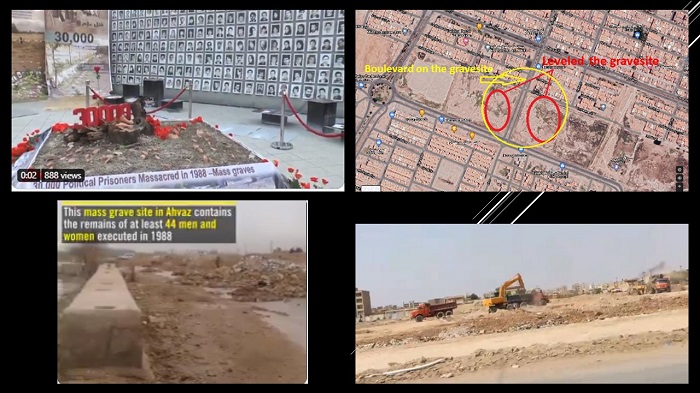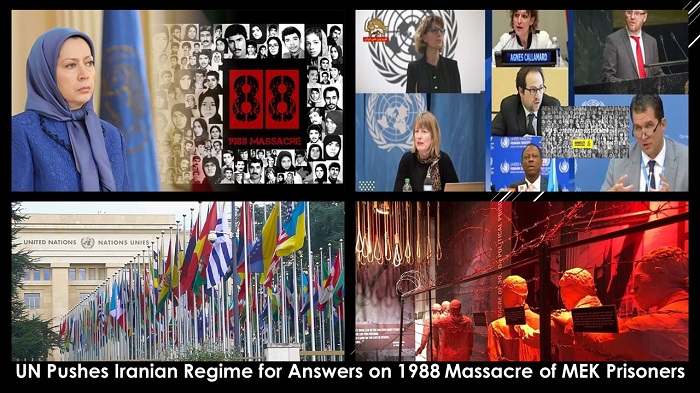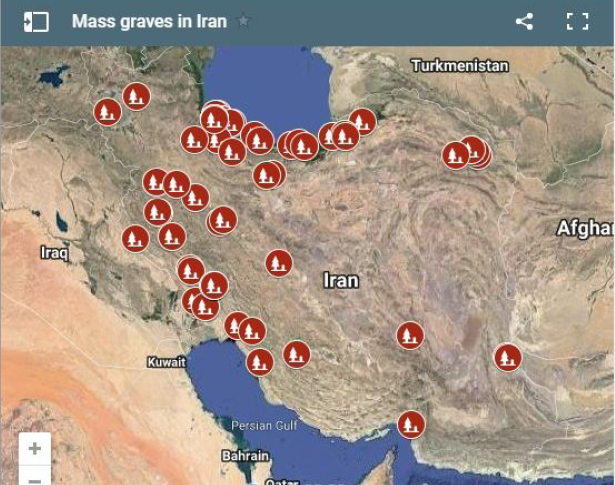
30,000 Iranians were executed and then dumped in unmarked graves in 1988. Most of these victims were supporters or members of the People’s Mojahedin Organization of Iran (PMOI / MEK Iran). The families of victims have for the most part been unable to grieve properly for their loved ones as they have been denied information about the whereabouts of the mass graves.
This is #Khavaran:#Iran's largest mass grave.The government have buried hundreds of political prisoners here in 1988&buried the truth about the site by bulldozing over it &destroying grave markers&memorials. Watch our short video for more info #BuriedTruthhttps://t.co/etdeegx4RY pic.twitter.com/9Rm6VrMjkx
— Justice for Iran (@Justice4Iran) July 2, 2018
Now, it is a step closer to an official investigation into the 1988 massacre by UN Special Rapporteurs after a letter by UN human rights experts was released.
The letter describes the 1988 massacre as a “crime against humanity” and demands that the Iranian regime agrees to an impartial internationally led investigation. There is no doubt that the release of this letter is a major embarrassment to the Iranian regime.
The letter was signed by six UN special rapporteurs on human rights and provides a detailed list of allegations against the regime, especially its “continued refusal to disclose the circumstances of death and remains of thousands of political dissidents who were forcibly disappeared and then allegedly extrajudicially executed between July and early September in 1988 in 32 cities.”
Mrs. Maryam Rajavi, the president-elect of the National Council of Resistance of Iran (NCRI), has welcomed the release of the letter and reiterated that the perpetrators of the massacre, some of whom still hold highly important positions within the Iranian regime, must be brought to justice.
According to Amnesty International, the report was a “momentous breakthrough” that “marked a turning point in the long-standing struggles of victims’ families and survivors.”
The prisoners were killed in at least 32 different cities across Iran and the fact that their bodies were dumped in unmarked graves meant that their disappearance has been a cause of extreme anguish for families of the deceased.
The Iranian regime has attempted all along to conceal the whereabouts of the mass graves, even to the extent of bulldozing the sites or building over them in order to hide them.

Memorial events by family members have been banned and any such activities have been harshly dealt with. As Amnesty has reported: “Actions taken (by the regime) include … threatening, beating and arresting families at the site, … (and) raiding homes of families who hold memorial ceremonies.”
Ali Saremi, a 62-year-old (PMOI / MEK Iran) supporter was arrested and executed in 2010 for attending a memorial service in 2007 for the slain prisoners.
No-one has ever been punished for the massacre, which rates as one of the twentieth century’s worst human rights abuses. Key members of the current theocratic regime were dir3ctly involved in the massacre, but have never faced justice for their heinous acts. Prime examples are Ebrahim Raisi, the regime’s Judiciary chief, Ali Khamenei, the Supreme Leader, Hassan Rouhani, the current regime president, and many others who still hold positions of power in the Intelligence Ministry, the Judiciary and IRGC (Revolutionary Guards).
In memory of Iranian hero Ali Saremi
10 years ago on this day, Iran's evil regime executed Ali Saremi. Mr. Saremi wanted the people of #Iran to live in freedom, and he loved them so much that he gave his life for them. The people of Iran will continue his path until freedom. pic.twitter.com/gAN3SqkQUy
— Donya Jam (@FreeeIran) December 28, 2020
There is overwhelming evidence that the 1988 massacre took place and that this was one of the world’s most horrible crimes against humanity. There is a very good reason why this has been brought to the UN as an urgent issue.
The UN experts who filed the letter have warned that they “will call on the international community to take action to investigate the cases including through the establishment of an international investigation.”
and People’s Mojahedin Organization of Iran – MEK IRAN – YouTube








